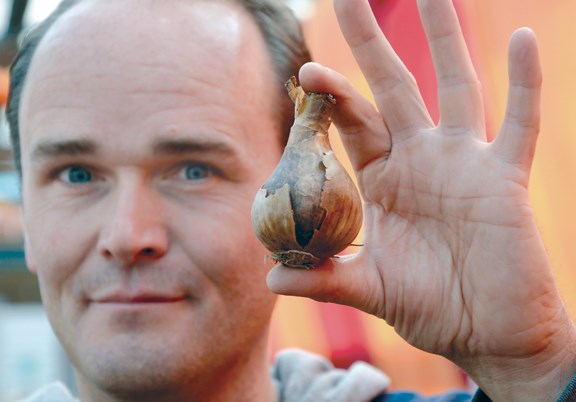While autumn winds steal leaves from the trees, that crisp chill in the air makes fall the perfect season to plant bulbs that will bloom in winter and spring.
Fall and winter bulbs like tulips, crocuses and alliums are stimulated by winter's chill, says Dave Monks, of Maple Leaf Garden Centre in West Vancouver.
The bulbs can be planted in October, November, and sometimes even as late as December, as long as the weather stays mild.
The bulbs can stand a little frost but nothing more, advises Monks.
"When the ground is frozen (that) is the end of the opportunity for you," he says. "Not just because it's hard to dig, it's going to be too cold to stimulate them."
When picking out a bulb, gardeners should check for soft spots and rotting. A good bulb should feel dense, says Monks.
"Check the top and make sure that it's not sprouting too much. A little bit of a sprout is OK," he says. An early sprout can mean the plant will bloom too early and die.
When positioning the bulbs, Monks advises keeping them about five inches apart.
"Any type of bulb that you want to come back to next year, you've got to give them a bit of space," he says. "If it's just for one season, you can position them closer so long as they're not touching each other."
Monks recommends planting a few varieties to take advantage of different life cycles.
While crocuses and snowdrops tend to make their first appearance in late winter, daffodils and dwarf irises usually emerge in the first days of spring. While sometimes classified as a fall bulb, the spring-flowering narcissus is actually a perennial.
"They can just come back and you don't have to do anything except fertilize and mulch it every year," he says.
With the right amount of care, crocuses will also come back year after year, says Monks.
Rich colours make the plants attractive to neighbours and friends, but the smell of the bulb often makes them alluring to fourlegged admirers.
"Unfortunately they do attract deer. Deer like to dig them up and eat them," says Monks.
For a gardener who doesn't want the burden of fending off wildlife, Monks recommends planting alliums.
"They don't like anything that smells too much, so being part of the onion family deters them," he says of the purple, globe-shaped flower.
The fritillaria, which tends to bloom in late spring, and the narcissus, are also fairly deer-resistant, he says. Besides deer, squirrels can also be a problem.
"The squirrels love to eat a lot of bulbs, pretty much the same ones that the deer like," he says.
Putting down chicken wire can be the best preventative measure but it does come with some risks, says Monks.
"You lay down chicken wire in the soil and then once they (bulbs) start popping up you have to remove it otherwise it's going to stunt their growth quite a bit," he says.
Blood meal, which is usually a powder made from slaughterhouse blood, can be effective in the right dosage, says Monks.
"It sounds really nasty but it keeps the squirrels away," he says.
However, adding too much blood meal may result in excess nitrogen in the soil, which can in turn promote the growth of leaves but not root growth.
"It won't even bloom if you put too much, it'll just grow a bunch of vegetation," he says.
For gardeners who pick up bulbs after the ground has frozen, Monks advises moving the operation inside.
"You can grow most of them indoors," he says.
As long as the plant gets consistent light and sterilized soil, there shouldn't be a problem, Monks says.
Indoor favourites include the narcissus and the amaryllis, which often blooms around Christmas.



